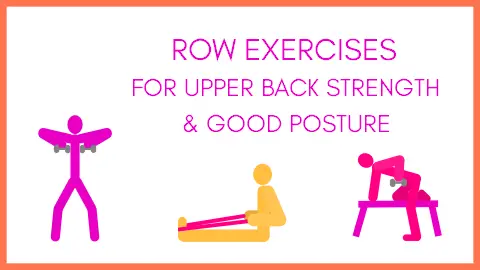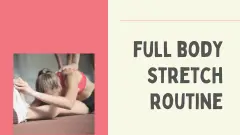Back pain is a very common problem, affecting around 80% of us at some time during our life. There are many possible reasons for back pain, but it’s often just due to muscle imbalances causing undue stress on the structures of the spine. To have a healthy back, you need to keep active and make sure that you keep all the muscles supporting your spine strong and flexible. Please note that the exercises in this post are intended to help prevent pain and injury. If you’re already suffering with your back, you should take advice from a medical professional or physical therapist before doing exercise. Please also read these general safety guidelines.
The importance of being active for a healthy back
As well as specific back exercises, exercise in general is good for back health, for the following reasons:
- It nourishes the discs, which act as shock absorbers. The nucleus in the centre of the disc contains a gel-like substance which has no direct blood supply. As the spine moves, fluids pass into the nucleus and waste products pass out. The gel tends to dry out with age, causing the spine to become stiff, but regular exercise helps to prevent this.
- Weight bearing exercise helps to preserve bone mineral density, which reduces the chances of osteoporosis. Osteoporosis can lead to small fractures in the spine and excessive curving of the upper back.
Muscle imbalances that can lead to back pain
Ideally, our bodies would be perfectly balanced, with the minimum stress on every joint. Unfortunately, this is rarely the case and imbalances develop due to a variety of reasons, including:
- Inactive lifestyles/too much sitting
- Being overweight
- Pregnancy
- Previous injury
- Wearing high heels
- Carrying a bag on one shoulder
- Repetitive movements (especially work related)
Once imbalances develop, they tend to just get worse over time, with tight muscles becoming tighter and weak muscles becoming weaker. In some cases, other muscles take over from weak ones, leading to them becoming even weaker. Imbalances in the muscles that stabilise the pelvis can lead to lower back pain, while imbalances in the muscles that stabilise the shoulders can lead to shoulder and neck pain.
Exercises for a healthy back
Lower back
The pelvis hinges on the thigh bones to allow movement, but in its rest position or “neutral” it shouldn’t be tilting in either direction. When there are imbalances, the pelvis can be at rest in a forward tilting position and this puts strain on the lower back. The anatomy of the pelvis is complex, but generally when this happens, the following problems will need addressing:
- Weakness in the core abdominal muscles
- Weakness in the glutes
- Tightness in the hip flexors
- Tightness in the hamstrings
- Reduced mobility in the joints of lower (lumbar) spine
Exercises to help with lower back muscle imbalances
Exercises for the core
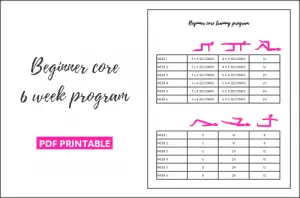
This workout starts with the basics of finding neutral pelvis and learning basic stabilisation exercises:
Exercises for weak glutes

This workout contains 10 exercises that specifically target the glutes.
Hip flexor and hamstring stretches
Make sure your muscles are warm before stretching. Hold the stretches for 30-40 seconds.
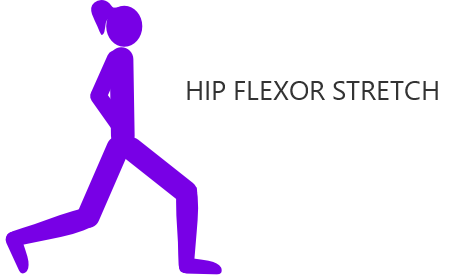
- Get into the position shown, back knee on the floor, front knee bent and directly over the heel
- Ease the back leg out behind until you feel a stretch on the muscles at the top of the back thigh
Hamstring stretch
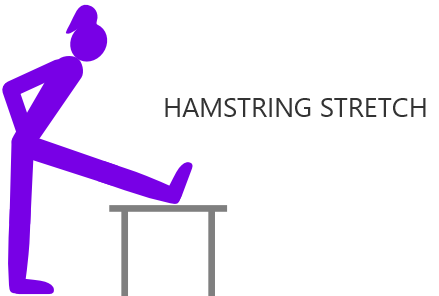
- Rest one foot on a chair or bench and straighten your leg out, making sure you don’t push your knee backwards.
- Lean your upper body over your leg until you feel the stretch.
- Hold for 30 seconds then change legs.
Shoulder bridge for lower back mobility
The aim with the Pilates bridge exercise is to improve mobility in all the joints of the spine. If your lower back is stiff, you’ll find that it’s difficult to work through every joint. Doing this exercise regularly should improve your mobility and will also help with core strength, both of which help you to have a healthy back. Do it 3-5 times about 3 times a week.

- Start by lying on the floor with your knees bent and your feet about hip distance, with your pelvis in neutral. Now press your lower back into the floor, tilting your pelvis backwards.
- Follow this movement through so that your lower back starts to peel off the floor. You should be aiming to come into the bridge position with a smooth, controlled, curling movement. Concentrate on working through one vertebra at a time. You will probably find this difficult at first as parts of your spine will be less flexible.
- Stop when your whole spine is lifted and your weight is resting on your shoulders. Now reverse the movement, lowering back down one vertebra at a time. Again, it should be a smooth, controlled movement, working through each joint in the spine.
Upper back
Upper back problems are often associated with desk work, but can also be due to any of the causes listed above. Alterations to upper spine posture include shoulder hunching and the head poking forward of the body. Issues can usually be improved by strengthening the muscles around the shoulder blades, stretching the chest muscles and improving upper back mobility. Improving mobility can be beneficial to the lower back as well as the upper back. This is because when twisting movement is limited in the upper back, the lower back can be forced to compensate, which can lead to injury.
Row exercises to strengthen the shoulder stabilisers
See this post for shoulder stabiliser exercises
Chest stretch
Weakness in the shoulder stabilisers causes the shoulder blades to move further apart and the chest muscles to become short and tight. So as well as strengthening the shoulder stabilisers, you should stretch the chest muscles.
For this stretch, you just need to stand tall with your hands clasped behind your back and your shoulders relaxed down. Hold for 30-40 seconds.
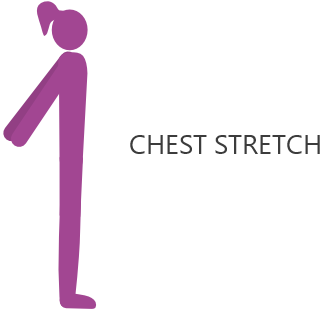
Spine twist for upper back mobility
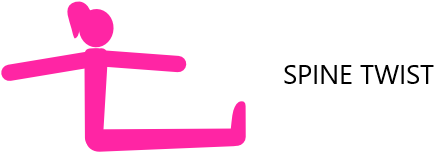
- Sit with your back straight and straighten your legs out in front.
- Raise your arms up to shoulder height, so that they are parallel with the floor.
- Keeping your back straight and your arms lifted, engage your abdominal muscles and rotate your upper body to the right.
- Come back to the centre and keep turning to repeat the movement to the left.
Related to healthy back exercises
In general, having an active lifestyle, keeping your muscles flexible and maintaining good posture will help you to have a healthy back. In addition to the exercises above, these workouts can help:
